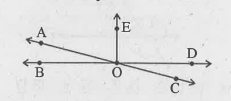Statement (X): Two adjacent angles be complementaryStatement (Y): adjacent angles need not be a same vertex. Statement (Z): Each angle in any pair of complementary angles is always acuteSolution in Telugu
X, Y, Z are true
X & Y are false but Z is true
X is true but Y & Z are false
X, Y, Z are false
Step by step video & image solution for Statement (X): Two adjacent angles be complementaryStatement (Y): adjacent angles need not be a same vertex. Statement (Z): Each angle in any pair of complementary angles is always acute by Maths experts to help you in doubts & scoring excellent marks in Class 7 exams.
Updated on:21/07/2023Similar Questions
क्या दो आसन्न कोण पूरक हो सकते हैं?
View SolutionStatement (L): The angles formed on both sides of a common arm and a common vertex are adjacent angles.Statement (M) : A pair of complementary angles forms 180^@ .Statement (N): A pair of complementary or supplementary angles need not be adjacent angles.
View SolutionStatement (I): From the adjacent, Figure. angle(l) , angle(n) are adjacent angles.Statement (A): Adjacent angles are having a common arm.Statement (M): To form a linear-pair angles are need not to be adjacent angles.
View SolutionCan two adjacent angles be complementary?
View Solutionपूरक कोण हमेशा आसन्न होता है।
View SolutionState whether the statements are True or False.
Two angles making a linear pair are always adjacent angles.
View SolutionIn the adjoining figure, name the following pairs of angles: Adjacent complementary angles.

View Solution
